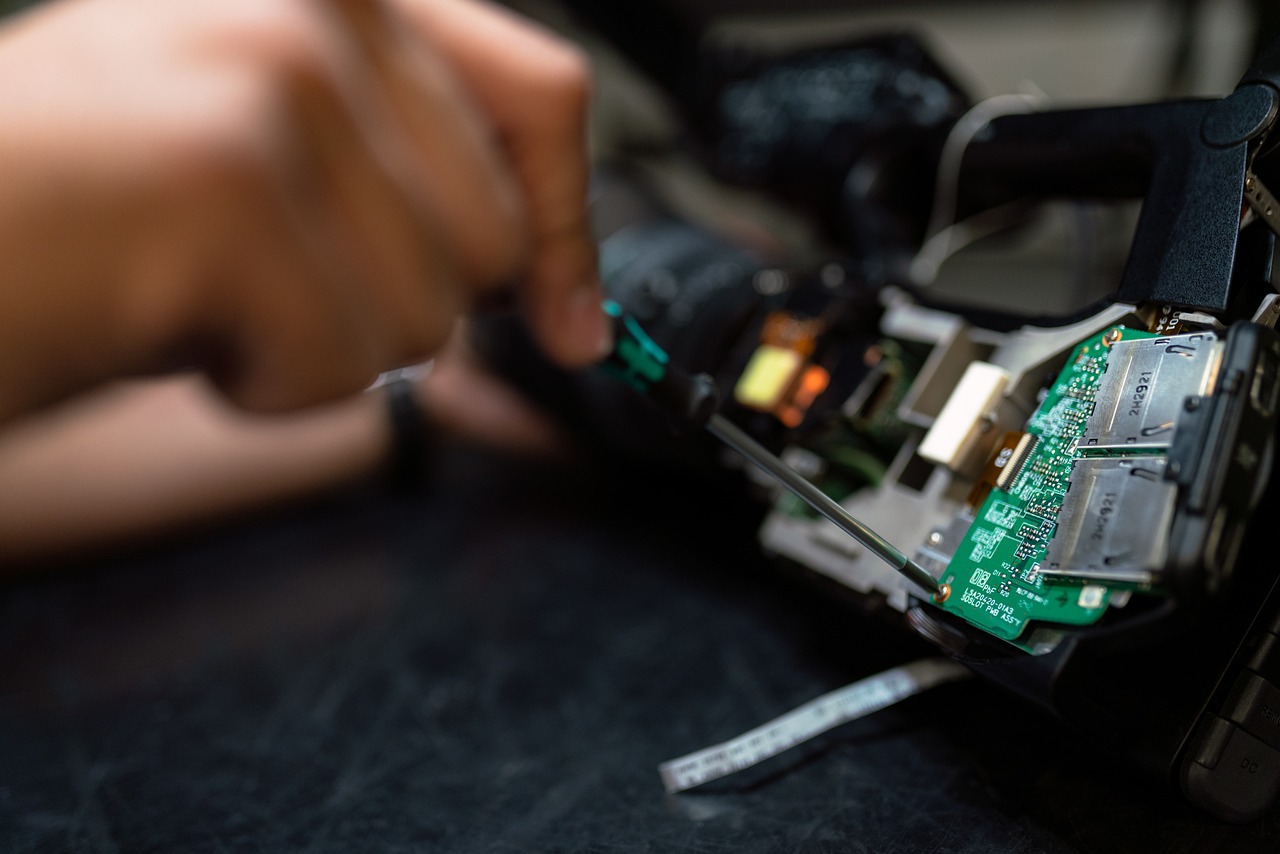The Internet of Things (IoT) has exploded in recent years, connecting billions of devices and generating unprecedented amounts of data. But raw data alone is not enough. To truly unlock the potential of IoT, we need artificial intelligence (AI). By integrating AI into IoT systems, we can move beyond simple data collection and analysis to achieve intelligent automation, predictive maintenance, and enhanced decision-making. This synergy, often referred to as AIoT, is revolutionizing industries from manufacturing and healthcare to agriculture and transportation. This post will delve into the transformative power of AI for IoT, exploring its applications, benefits, and challenges.
The Power of AIoT: Transforming IoT Data into Actionable Insights
What is AIoT?
AIoT represents the convergence of Artificial Intelligence (AI) and the Internet of Things (IoT). It leverages AI technologies like machine learning (ML), deep learning (DL), and natural language processing (NLP) to enhance the functionality of IoT devices and systems. Essentially, AI acts as the “brain” that processes the massive volumes of data generated by IoT devices, enabling them to make smarter decisions, automate tasks, and predict future events.
- AI enhances IoT: AI algorithms analyze IoT data to identify patterns, anomalies, and correlations that would be impossible for humans to detect manually.
- IoT empowers AI: IoT provides the real-world data that AI algorithms need to learn and improve their performance.
- Synergistic Relationship: The combined power of AI and IoT allows for more efficient, intelligent, and autonomous systems.
Key Components of an AIoT System
An AIoT system typically consists of several key components working together:
- IoT Devices: Sensors, actuators, and other devices that collect and transmit data.
- Connectivity: Network infrastructure (e.g., Wi-Fi, cellular, LoRaWAN) that enables communication between devices and the cloud.
- Data Storage: Cloud-based or on-premise storage solutions for storing the vast amounts of data generated by IoT devices.
- AI Algorithms: Machine learning models, deep learning networks, and other AI algorithms used to analyze the data.
- Edge Computing: Processing data closer to the source (i.e., on the device or a nearby gateway) to reduce latency and improve real-time responsiveness.
- Applications & Interfaces: User interfaces and applications that allow users to interact with the AIoT system and access insights.
Transforming Industries with AI-Enhanced IoT
Smart Manufacturing
AIoT is revolutionizing manufacturing by enabling predictive maintenance, optimizing production processes, and improving quality control.
- Predictive Maintenance: AI algorithms analyze sensor data from manufacturing equipment to predict potential failures and schedule maintenance proactively, reducing downtime and costs. For example, monitoring vibration and temperature sensors on motors to detect anomalies before a breakdown occurs.
- Quality Control: AI-powered vision systems can inspect products on the assembly line in real-time, identifying defects and ensuring consistent quality.
- Process Optimization: AI can analyze production data to identify bottlenecks and optimize workflows, improving efficiency and throughput.
Smart Healthcare
AIoT is transforming healthcare by enabling remote patient monitoring, personalized medicine, and improved diagnostics.
- Remote Patient Monitoring: Wearable sensors and other IoT devices can track patients’ vital signs, activity levels, and other health metrics, allowing healthcare providers to monitor their condition remotely and intervene early if necessary. For instance, continuous glucose monitoring for diabetes management.
- Personalized Medicine: AI can analyze patient data to identify patterns and predict individual responses to treatments, enabling personalized medicine approaches.
- Improved Diagnostics: AI-powered image recognition algorithms can assist radiologists in analyzing medical images, such as X-rays and MRIs, improving diagnostic accuracy.
Smart Agriculture
AIoT is optimizing agriculture by enabling precision farming, crop monitoring, and automated irrigation.
- Precision Farming: Sensors and drones can collect data on soil conditions, weather patterns, and crop health, allowing farmers to optimize irrigation, fertilization, and pesticide application.
- Crop Monitoring: AI algorithms can analyze satellite imagery and drone footage to identify areas of stress or disease in crops, allowing farmers to take corrective action.
- Automated Irrigation: Smart irrigation systems can automatically adjust water usage based on real-time data, conserving water and improving crop yields.
Benefits of Integrating AI into IoT Systems
Enhanced Efficiency and Productivity
AIoT systems can automate tasks, optimize processes, and improve resource utilization, leading to significant gains in efficiency and productivity.
- Automation: Automating repetitive tasks frees up human workers to focus on more complex and creative activities.
- Optimization: AI algorithms can identify opportunities to optimize processes and reduce waste.
- Resource Management: AIoT systems can monitor and manage resources more effectively, reducing costs and improving sustainability.
Improved Decision-Making
AI provides valuable insights from IoT data to assist better decision-making and optimize strategies
- Data-Driven Insights: AI algorithms can analyze data from various sources to provide valuable insights that inform decision-making.
- Predictive Analytics: AI can predict future trends and outcomes, allowing organizations to anticipate challenges and opportunities.
- Real-Time Intelligence: AIoT systems can provide real-time intelligence, enabling organizations to respond quickly to changing conditions.
Reduced Costs and Risks
AIoT systems can reduce costs by preventing failures, optimizing resource allocation, and improving safety.
- Preventive Maintenance: Predicting failures before they happen, and reducing downtime
- Resource Allocation: AI can optimize the allocation of resources, reducing waste and improving efficiency.
- Safety: Monitoring dangerous environments to improve safety by predicting events and alerting to possible incidents.
Challenges and Considerations for AIoT Implementation
Data Security and Privacy
Ensuring the security and privacy of data is paramount when implementing AIoT systems.
- Data Encryption: Use strong encryption to protect data both in transit and at rest.
- Access Control: Implement strict access control policies to limit who can access sensitive data.
- Privacy Compliance: Comply with relevant privacy regulations, such as GDPR and CCPA.
Scalability and Interoperability
AIoT systems must be scalable to handle the increasing volume and variety of data generated by IoT devices.
- Cloud-Based Solutions: Leverage cloud-based platforms to provide scalable data storage and processing capabilities.
- Standardized Protocols: Use standardized communication protocols to ensure interoperability between different devices and systems.
- Modular Design: Design AIoT systems with a modular architecture that allows for easy expansion and adaptation.
Computational Resources
AI algorithms can be computationally intensive, requiring significant processing power and memory.
- Edge Computing: Deploy edge computing to process data closer to the source, reducing latency and bandwidth requirements.
- Optimized Algorithms: Use efficient AI algorithms that are optimized for resource-constrained environments.
- Hardware Acceleration: Leverage specialized hardware, such as GPUs and FPGAs, to accelerate AI processing.
Conclusion
AI for IoT represents a powerful combination that has the potential to transform industries and improve lives. By leveraging AI to analyze and interpret IoT data, organizations can achieve unprecedented levels of efficiency, productivity, and intelligence. While there are challenges to overcome, the benefits of AIoT are undeniable. As AI and IoT technologies continue to evolve, we can expect to see even more innovative and impactful applications of AIoT in the years to come. Embracing this technological synergy is crucial for businesses seeking to stay competitive and thrive in the digital age. Investing in AIoT is not just about adopting new technologies; it’s about building a smarter, more connected, and more efficient future.




